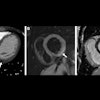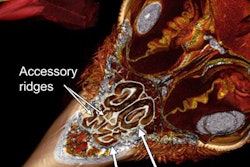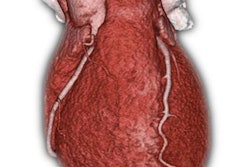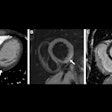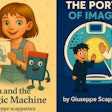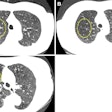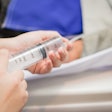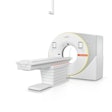Dear CT Insider,
Coronary CT angiography (CCTA) seems to be a good tool for assessing the effect -- if any -- of statins on reducing plaque volumes, say researchers from the U.S. National Institutes of Health (NIH). Still, when the time comes for that follow-up scan, you'd better do it on the same machine you used for the original study.
The NIH researchers tested the performance of two state-of-the-art CT scanners in creating reproducible plaque volume measurements. Half of the patients had their follow-up scan on the same scanner as the original, while the other half had follow-up CCTA on a different machine. Given reliable plaque-analysis software and rock-solid readers, how did the two machines compare in reproducing plaque volumes? Find out in this issue's Insider Exclusive.
CCTA is also a safe gatekeeper for invasive coronary angiography, conclude researchers writing in BMJ. The test's greatest clinical value, they say, may be its ability to reliably rule out coronary disease in patients with atypical presentation and a low-to-intermediate pretest probability of disease, reducing the need for invasive catheterization. But the evidence on outcomes is mixed. Click here to learn more.
Finally, CCTA was found to accomplish a goal that the treadmill stress test always failed: getting people to pay enough attention to their results to make significant lifestyle changes. But did CT get them to finally join a gym? Find out here.
In joint imaging, a new study in the American Journal of Roentgenology used 4D 320-detector-row CT to provide a detailed analysis of joint motion. The technique accurately measured increases in range of motion after surgery. It's good news because chronic ankle instability is tough to diagnose with current techniques. So these results could go a long way toward finding and correcting post-trauma ankle instability at extremely low radiation doses.
In news from the animal kingdom, a CT study of bird beaks showed their utility as a master thermostat, operating as complex radiators, cooling systems, and humidifiers all in one. For details, and a picture worth a thousand words, click here.
Closer to earth, a mouse study looked at the effect of CT radiation on the brain, and the picture it painted wasn't pretty. Click here for a sobering if hard-to-pronounce range of effects including marked alterations in the phosphoproteome.
Lest we overlook water as a habitat, investigators from the University of Washington have built a database of CT fish images with a goal as wide as the Pacific -- documenting every species they can get into their micro-CT scanner. The researchers have some tips on workflow, too, as you'll find in our story here.
Are you ready to take on a difficult and somewhat risky neck CT angiography exam? Know the factors that increase your chances of a positive result, in a story you'll find here.
Last but not least, here's something interesting about contrast media use and acute kidney injury rates: They're not related. And here's something interesting about the effects of breast shielding on measured DNA damage: They're not related either.
We invite you to scroll through the links below for the rest of the news about radiology's go-to modality -- right here in your CT Community.
